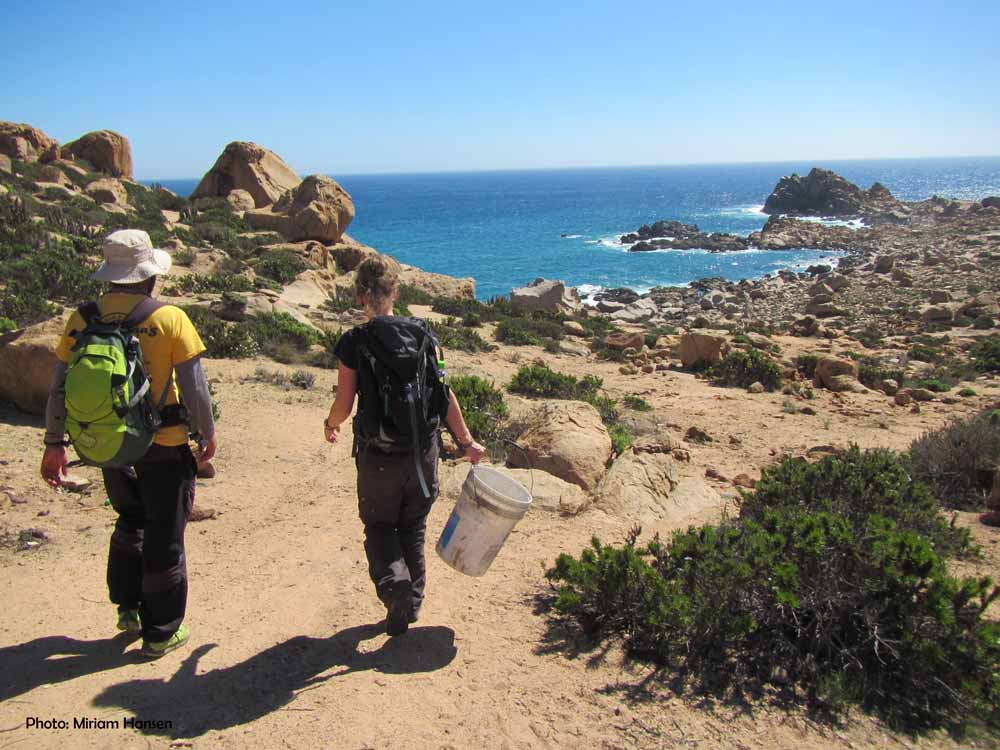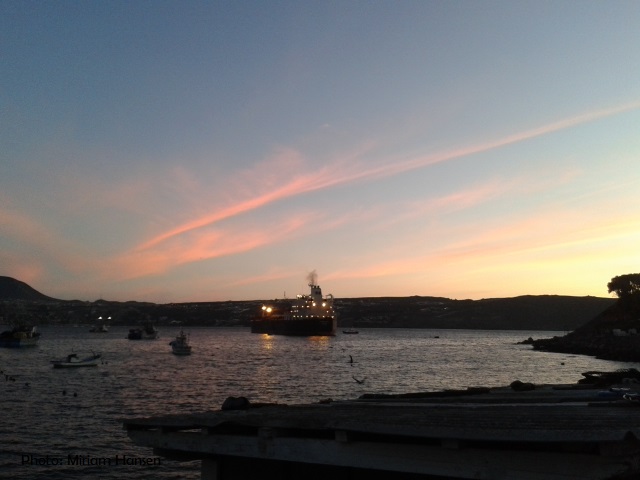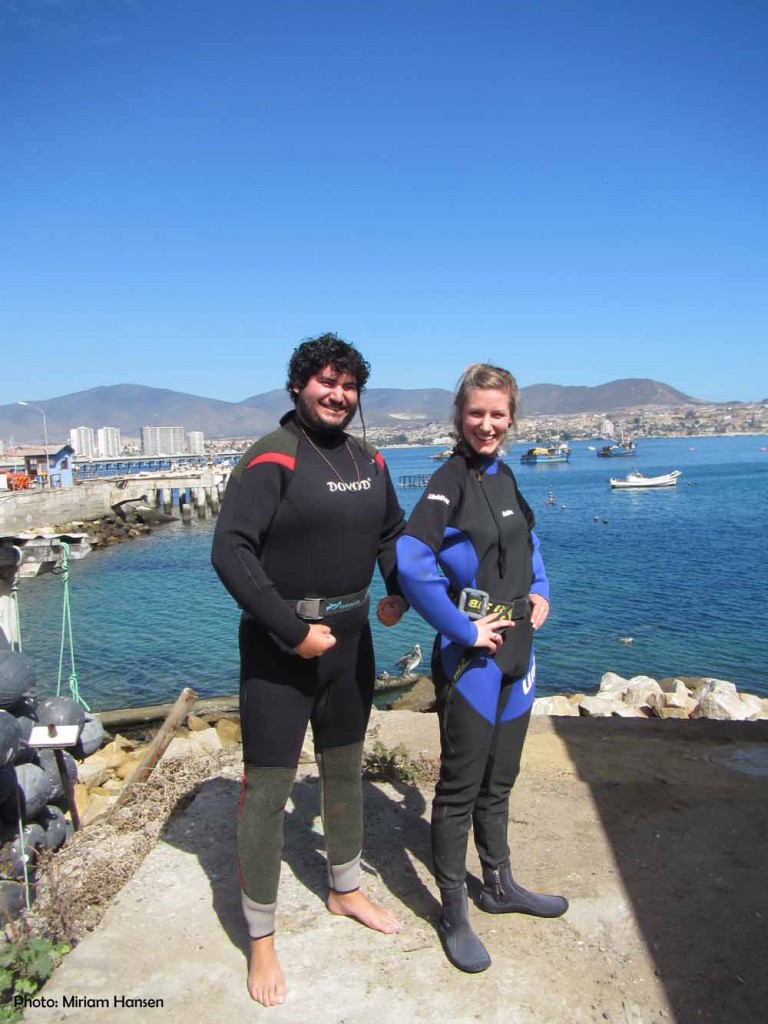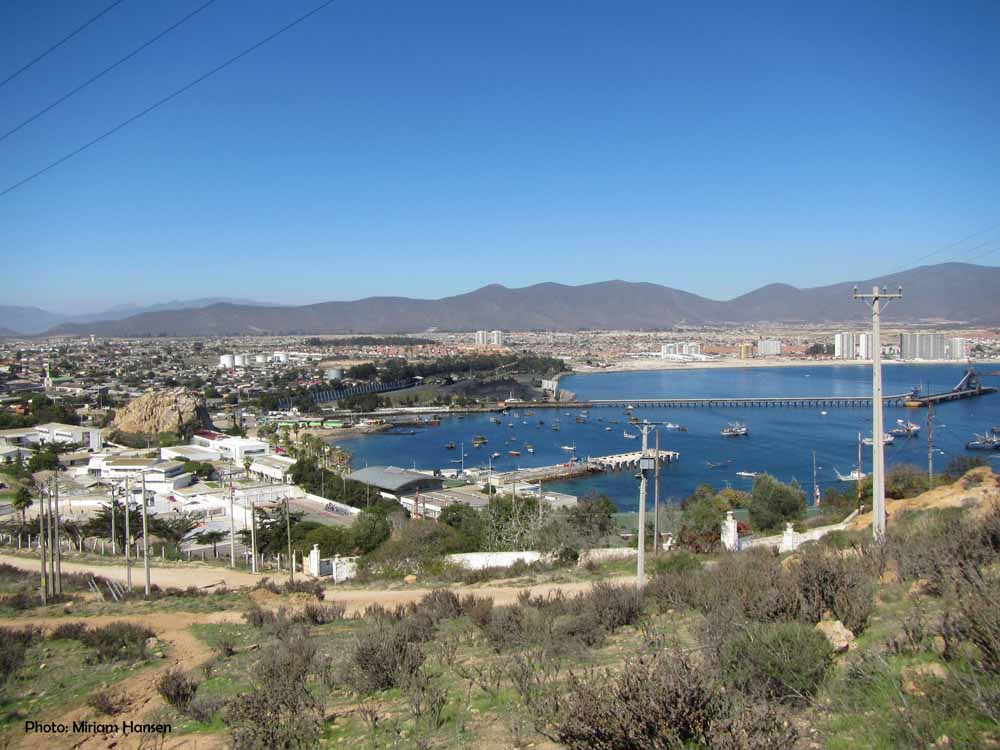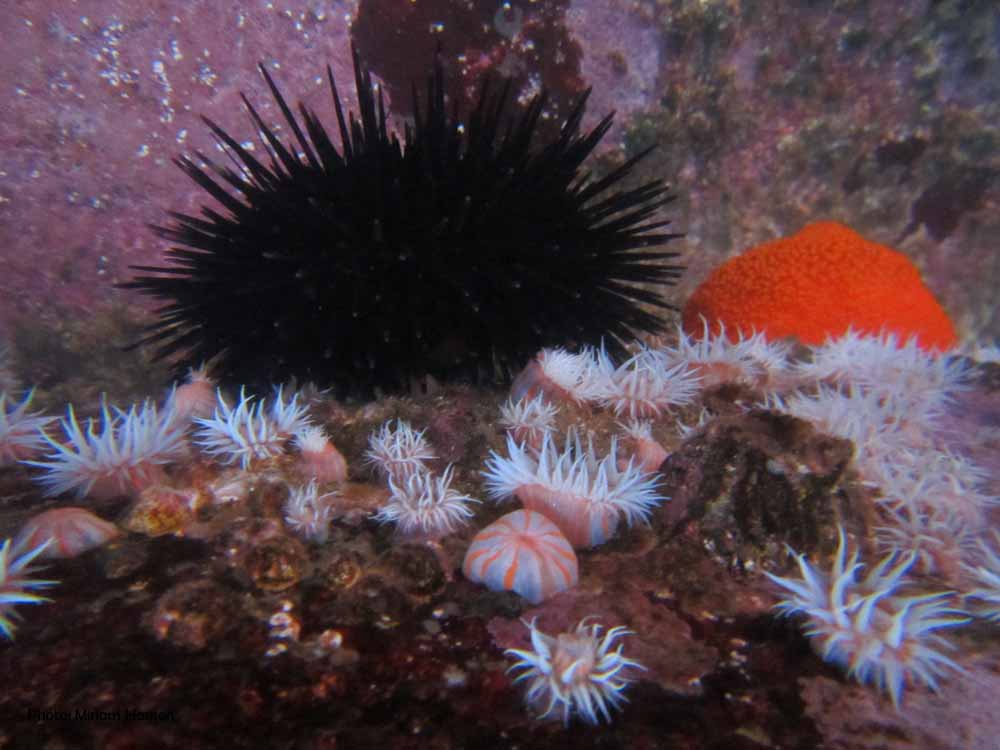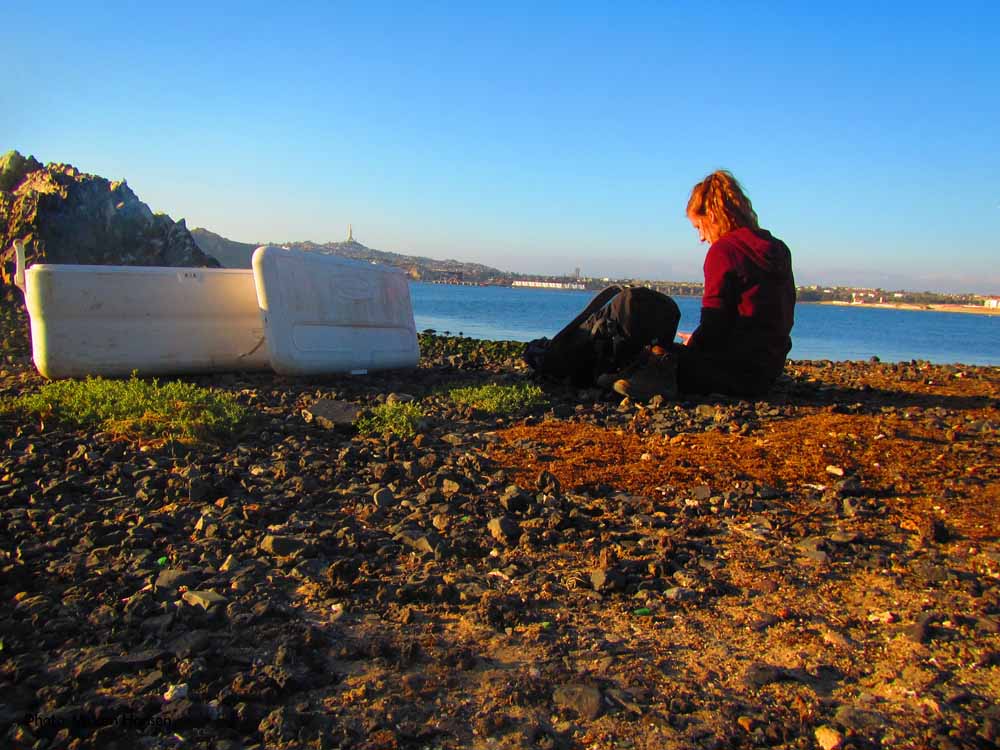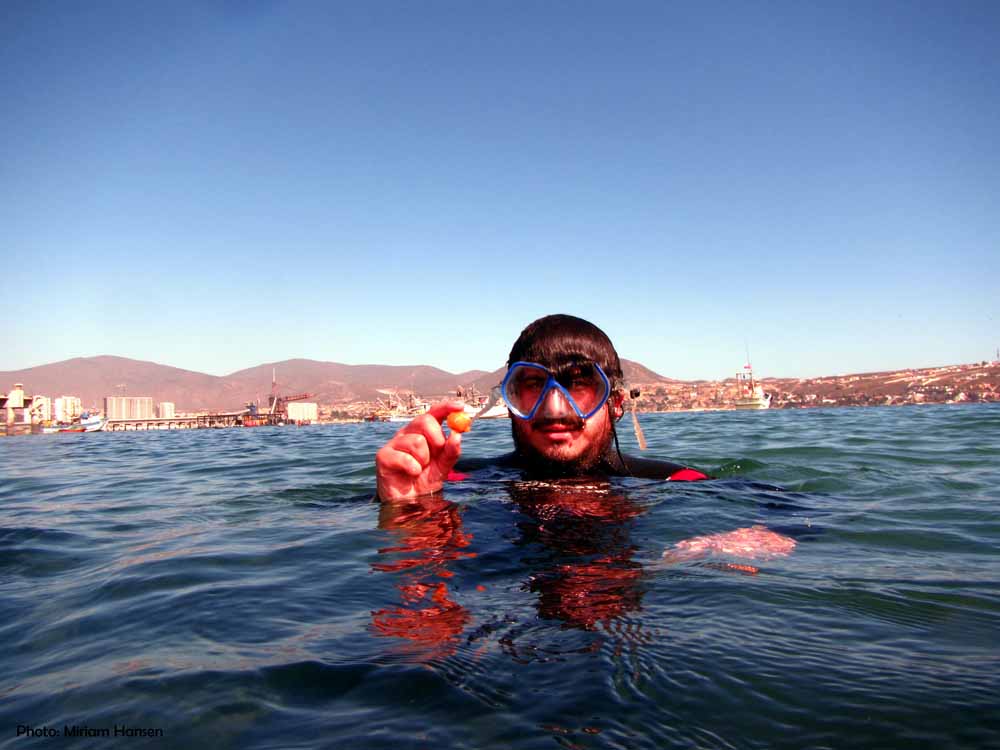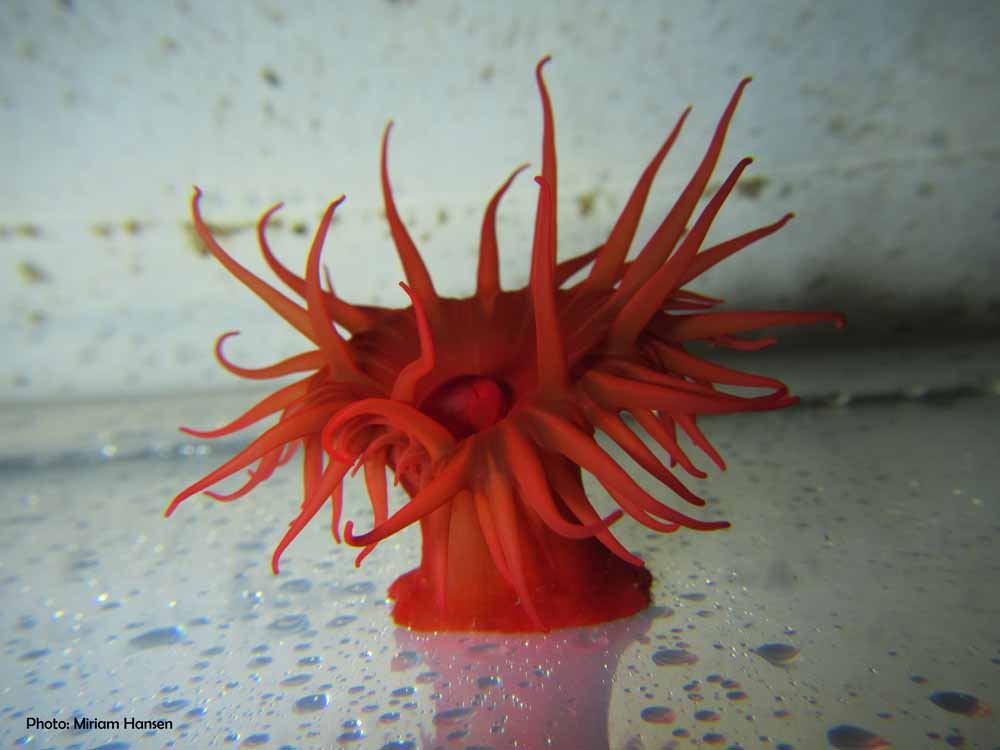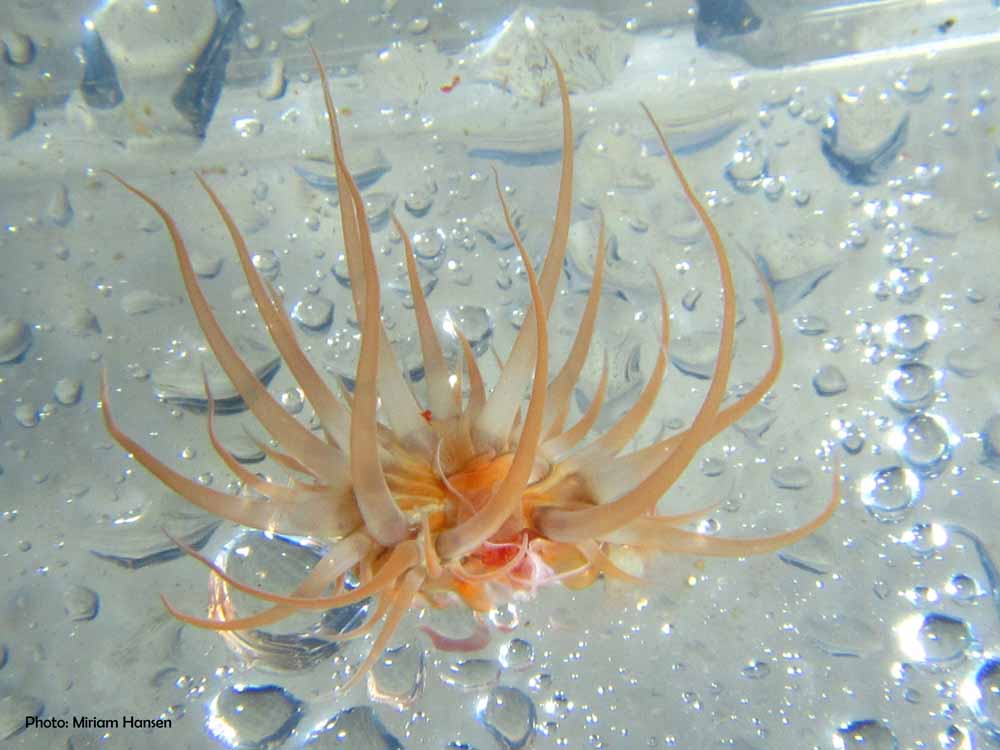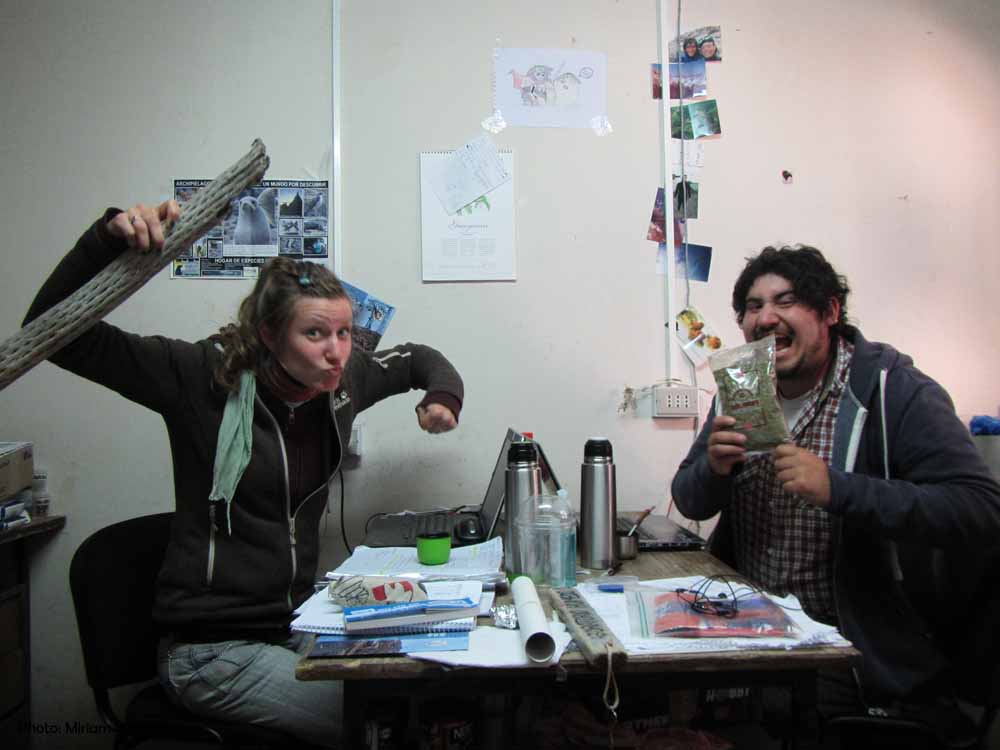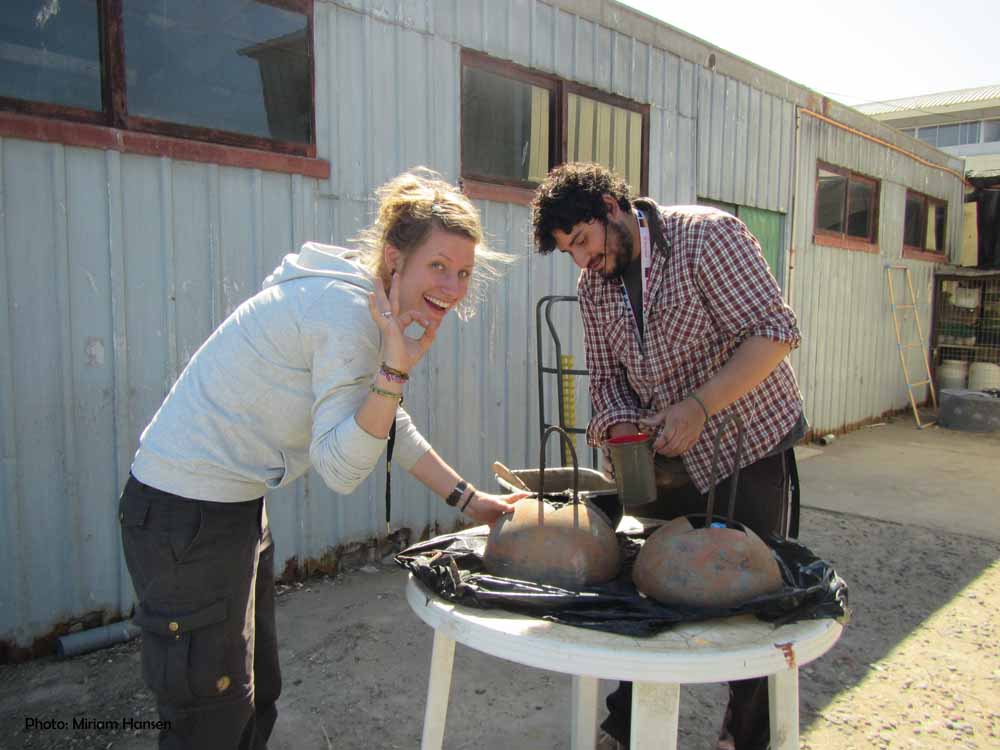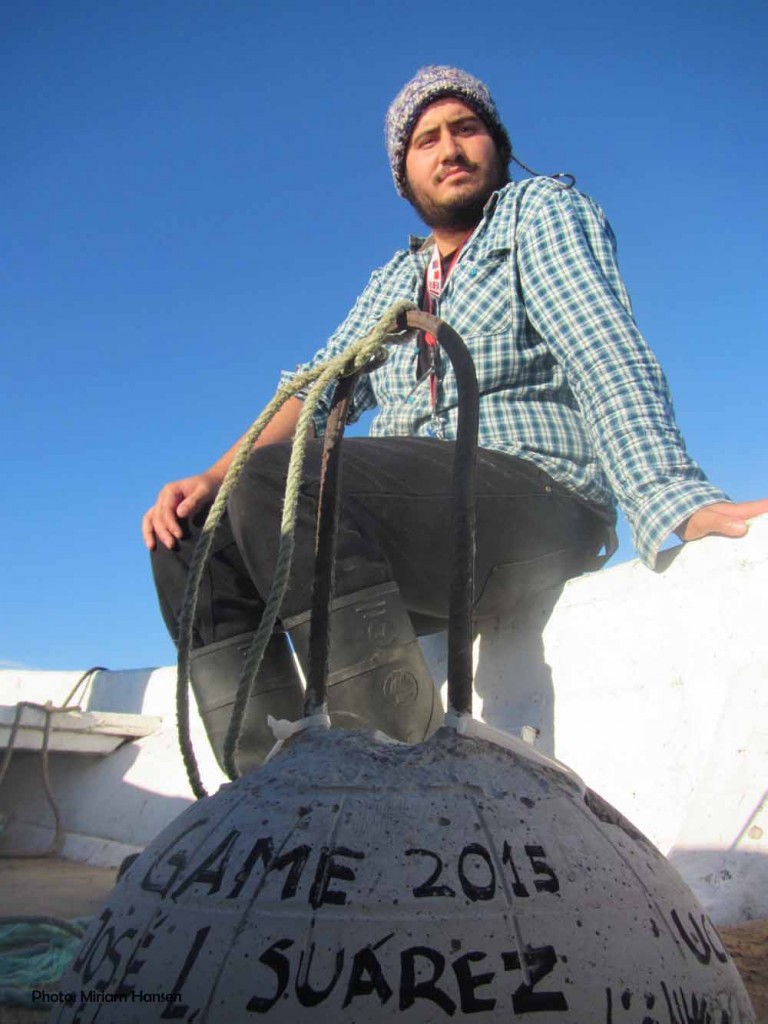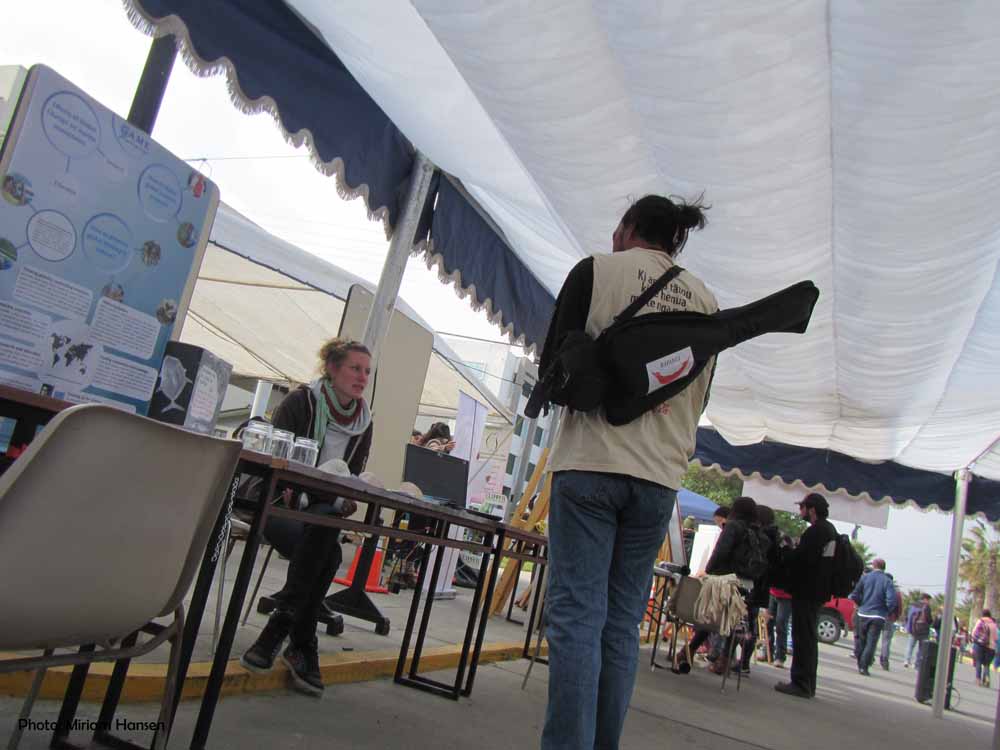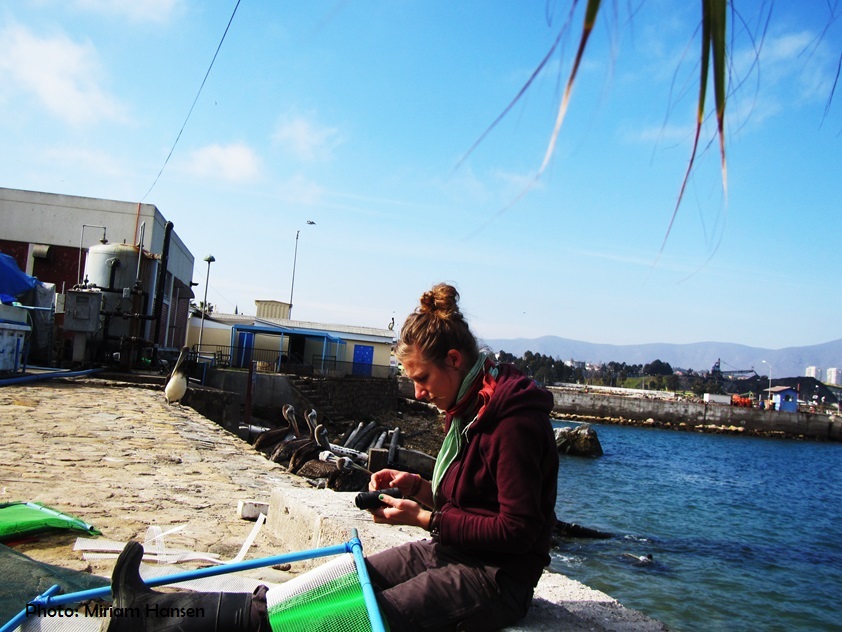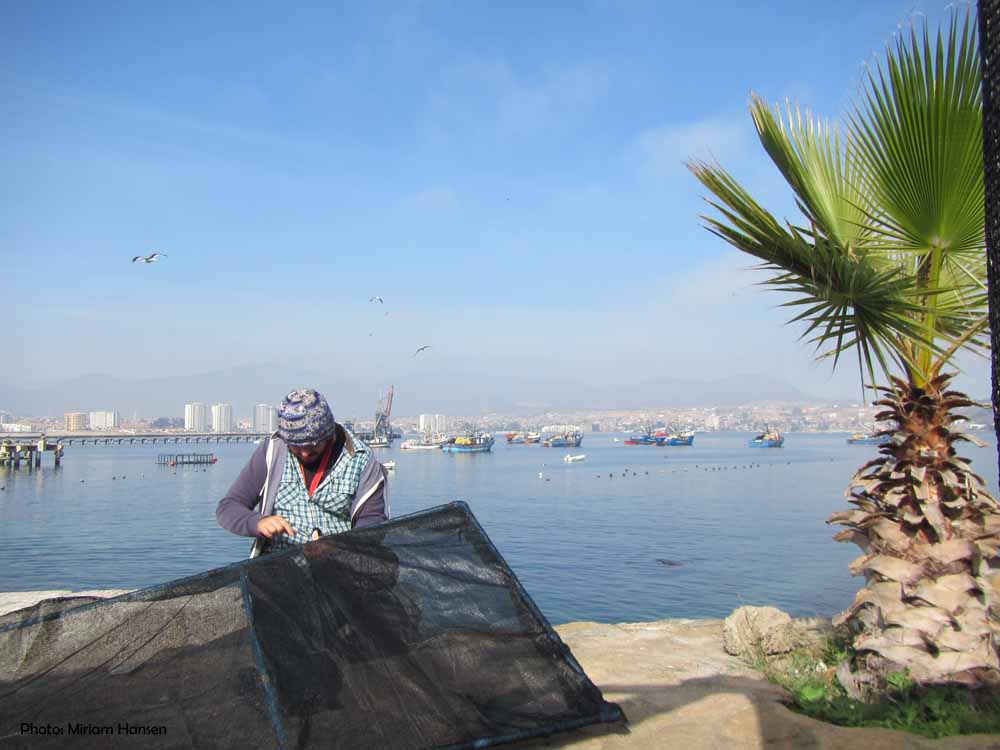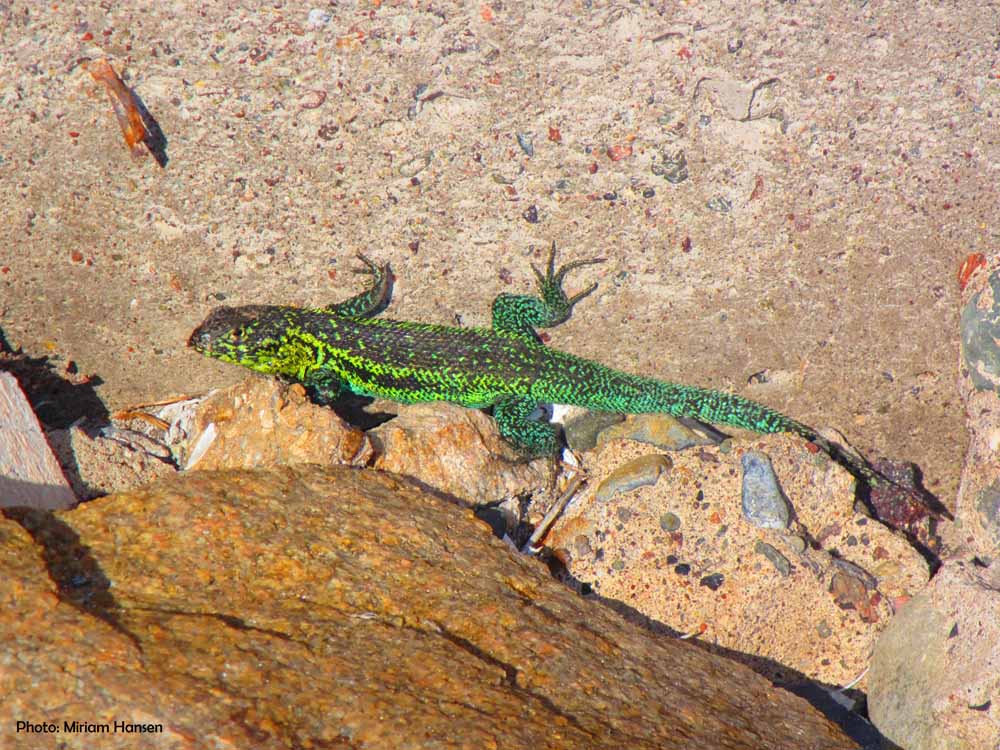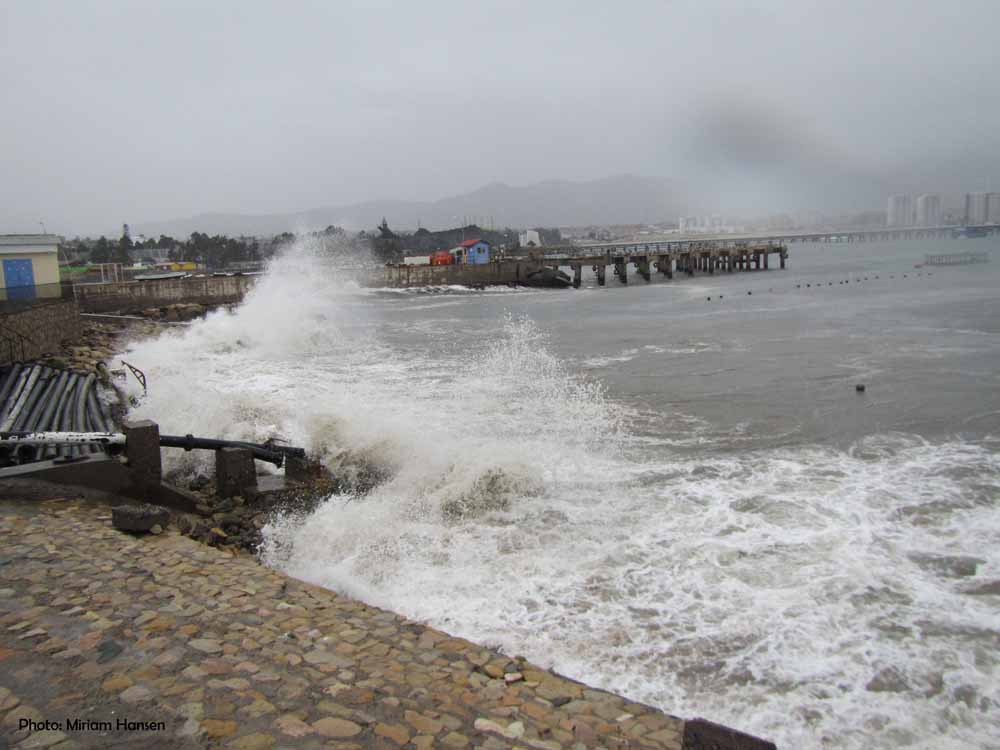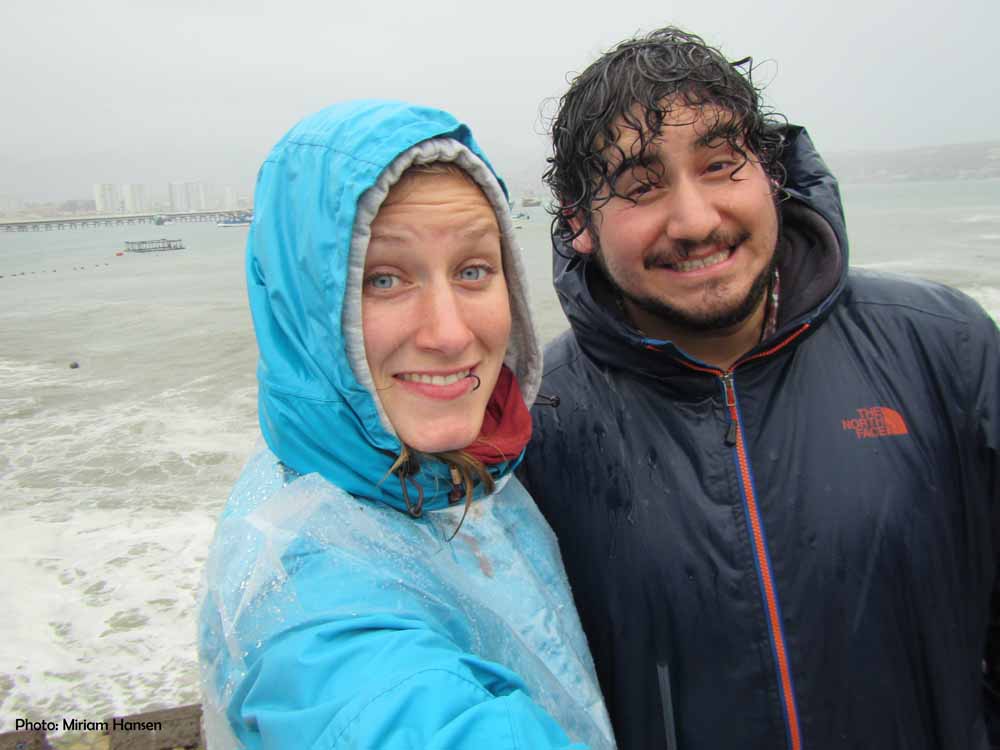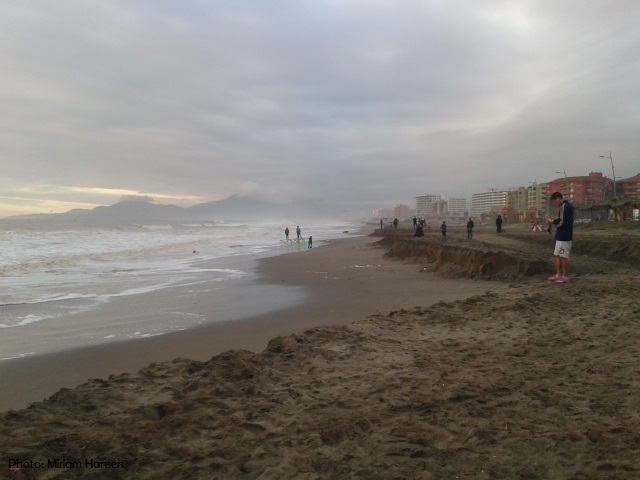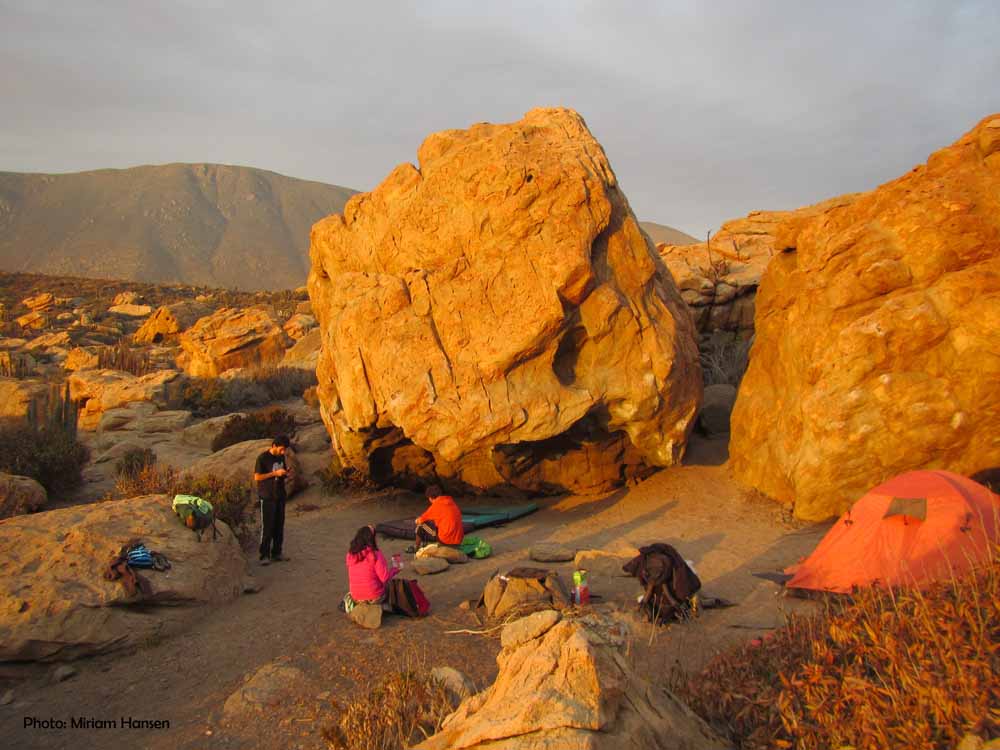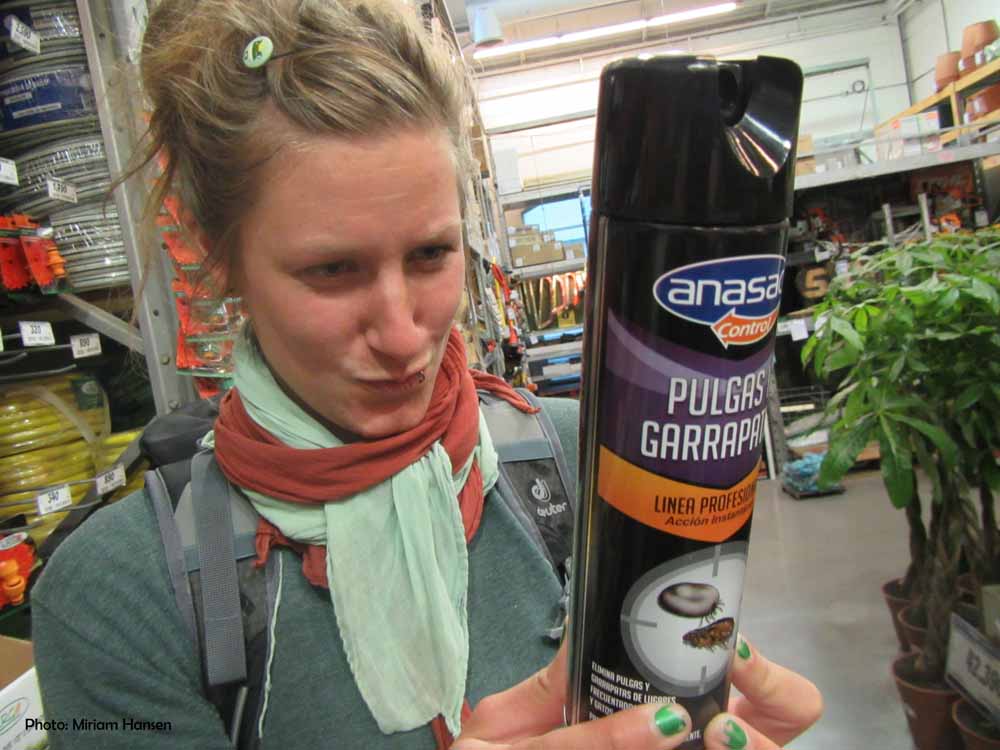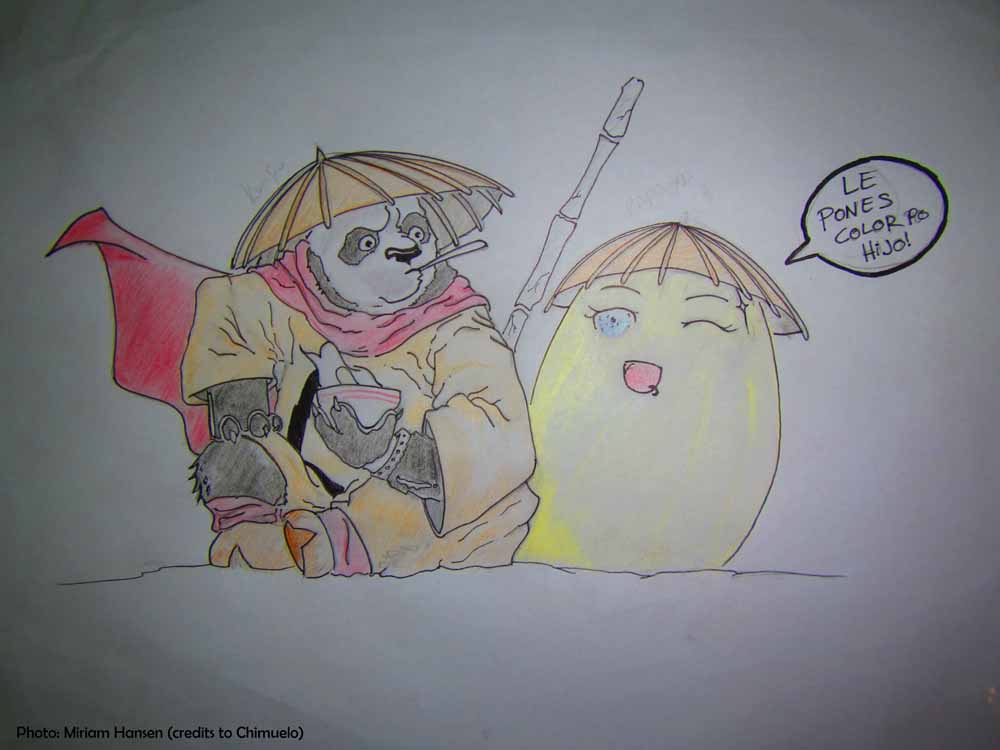Another day of work in our big adventurous project has come to an end and the sun starts its dwindling away over the coastal city of Coquimbo. Now, the pinkish, marshmallowy lights arise and colourise the whole sky above our beautiful Bay Herradura. The silhouettes of numerous ships and fisher boats are bobbing slightly up and down in the calm waters and we can see the last pelicans flying towards their shelter for the night.
We, who is José Luis and I, Miriam, are this year’s GAME team for Chile and work together for six month at the Universidad Católica del Norte in Coquimbo in the north of the country. José Luis grew up in the colourful city of Valparaíso and is an undergraduate student of marine biology at the Universidad Austral de Valdívia in the south of Chile and I am a geographer from Kiel and I am currently doing my master of science in Environmental Management at Kiel University.
It is already our fifth month here in Coquimbo and we have now fully adapted to the work as junior marine scientists. We have developed our daily routines and are progressing step by step towards a successful completion of our thesis project with hopefully satisfying results. But let’s tell the story from the beginning on: After a bumpy start with some unforeseeable obstacles, José Luis and I have reunited in the city of Coquimbo in the second week of April. As the Chilean customs have merciless, strict rules, José Luis had troubles to enter the country with all our lab equipment, which we bought in Germany, in his luggage. After lots of discussions, phone calls and visits at the customs in the capital Santiago, we were finally allowed to fetch our equipment. Then our team and our materials were finally complete and we were ready to get started with our experiments.
The first days and weeks were definitely very exciting, since Coquimbo was a new site for both of us. We were confronted with everyday challenges like: What is the correct hand gesture to make a bus stop at the side of the road without just saluting the driver and see the bus pass by? Another challenge was to get along with the Chilean way of the Spanish language, since Spanish is not the same as Chilean and there are expressions you can only learn in the streets but not from books. Of course these things were obstacles rather for me as the German part of the team. During the first weeks in the marine laboratory at the University, we needed to organize ourselves and built up a basic network of materials, co-workers and sources of information. We got to know lots of friendly and helpful scientists, technicians and students, who are working in labs and offices close by, who never hesitated to support us with overcoming any kind of problem that we dealt with. Meanwhile we have grown up to mostly independent marine biologists, who are getting more and more familiar with scientific work.
To prepare our experiments, we began to collect specimens of sea anemones to get some first impressions of our study organisms. We collected several individuals of different species to observe their behaviour and to check for their suitability for our study.
All of the collection sites were not far from the university: a place called Bucanero in the Bay Herradura, the Pampilla in the hinterland of the university and the Bay Guayacán that is right in front of the institute. After some days of intense anemone surveillance and identifying species, we decided to work with the following two: Anthothoe chilensis and Anemonia alicemartinae. Both species are very abundant in the waters around Coquimbo and thereby easy to collect.
By this time, we made ourselves comfortable in the different working places: There is the spacious old wet laboratory from former times, which seems to contain lots of scary stories and we are pretty sure that there is a lab ghost living between these walls. Anyway, it provided a nice home for our anemones during the first time and we also started to like working in this room. It has many provisional technical solutions, such as a seawater supply tap that needed to be fixed, because it made us entirely wet from tip to toe for three times. However, we adapted pretty fast to these things and reused, recycled and improvised like geniuses. Then there is another wet laboratory, for which we also got the permission to work in. It actually is the lab that is reserved for students in their last semester, who are then working on their thesis projects. This place was a bit easier to use, since pressured air and seawater were easily available and the one exploding tap was gently overseen by our gracious eyes. The office where José Luis and I have space for our laptops and where we read and write has history as well. It is very adventurous to install oneself in these rooms together with the numerous spiders lurking in every corner. Also it is easy to see that already generations of students and scientists worked here. Furthermore, we are in Latin America, so you need to come with an open mind and should have a certain amount of flexibility and serenity. After having checked all available spaces, we installed ourselves in the so called “sucucho”, which is a storeroom for a vast number of different samples that cover its walls. But it comes with a work desk and two chairs, which was all we needed. And actually as time passed our now beloved sucucho became our second or maybe also first home. Another important place is the working space right next to the bay where pelicans always sit next to us. Here we constructed all the necessary installations, met co-workers and enjoyed our sunny lunchtimes. We needed to cooperate with lots of different people within the course of our project and maintain the contact. All the installations required several handmade constructions which made us work with saw, drill and gavel. The times we went shopping for the different materials we utilized became uncountable and I think we already know the homecenter by heart. We discovered that we are not only junior scientists but also social workers, craftsmen, purchasers, divers and many more. The work was pretty diverse.
During the second month of our stay, we started our pilot study. For this, we installed five water baths with different temperature regimes that lay above the normal habitat temperature of our test organisms. We let this experiment run for four weeks. The main purpose of the pilot study was to identify the upper thermal tolerance limit of the sea anemones with which we planned to continue in greater detail in the main study. During the pilot study, we got more experienced in the daily maintenance of the animals and learned how to measure all the different response variables, which were supposed to give us information about the thermal tolerance of our test species. After various trials and some successes and fails, we ended the pilot study and started preparing the main study. As we conducted the pilot study in an indoor wet lab with relatively small water baths, we needed to construct a new setup for our main experiment, because more replicates were needed to ensure a sufficient test power. Days passed by during which we were only sitting outside the lab, next to our beautiful Bay Guayacán, together with the numerous pelicans that visit us every day, and sewed structures out of PVC tubes and nets to stabilise our experimental units in the big aquaria that we decided to use in the main study. And as we tested all the equipment needed for thermoregulation and while we raised the temperature inside the water baths to the respective target temperature, more than once the idea came to our minds to jump into these mini swimming pools and take a short swim. Well, we didn’t do it yet. Right now we are in the middle of our main experiment and have about 4 more weeks to go until we will end this study and start collecting the last response variables, cleaning up and getting ready for our return to GEOMAR in Kiel. Impossible to already think of the return, as it seems just yesterday that we had our first day here in Coquimbo.
Along with all these scientific activities, we didn’t miss out on the social enjoyments of our stay. You learn that specific things are unavoidable when you are in Chile like for instance: Mate tea and its traditions. Mate tea is drunk in every place, you can enjoy it bitter or sweet with different flavours and don’t you move the straw when the Mate cup is offered to you! This is one of the many rules which come with the Mate tea. As a vegetarian you will struggle when it comes to barbeque sessions in the evenings, because usually all you will see on the grillage is meat. Normally, the Chileans put half a cow on the grid – delicious though! And you better leave out plates, knives and forks – your hands are the best tools to eat that you were given by God or whoever you believe in! As people here started to get to know us personally and as a junior scientist team, they started referring to us very formally as José Luis and Miriam, a bit more casually as Tata and Mia and, out of the more funny moments, as Kunfu and Papaya.
If you come from a place far away from any oceanic plates that frequently crush into each other, you are used to a peaceful sleep without any giant force moving your walls. But as Chile is located along two pretty active tectonic plates, now and then the earth starts to tremble. Sometimes only for seconds, sometimes slightly or heavily. It is indeed a weird feeling waking up in the middle of the night, because your bed, which has rolls and broken brakes, is moving crisscross in your dormitory and the wardrobe doors start their own little concert. But there is nothing you cannot get used too – as we say.
As Coquimbo lies in a semi-arid area not far from the desertic regions of the country, it basically never rains. If the people here would not irrigate their farm land and gardens, the landscape would look very sparse. This is why people are getting nervous when the weather forecast predicts rain for the following days and start buying plastic foils to cover their belongings like e.g. sofas in the patio. We did the same and covered our outdoor heating system with giant plastic covers.
Until now we experienced actually several days of rain, drizzles or heavy rainfalls together with strong winds and destructive waves which all were the consequences of the climate phenomenon El Niño that affects the coastlines of Chile and Australia during these days. The impacts of the storm surges and the heavy winds are devastating. The ocean has taken big parts of the sandy beaches and several trees and signboards were ripped out of the soil. The region is not used to such weather conditions and this is why the consequences are severe. But afterwards, the sky looks healthier than ever, so that also the snow-covered mountaintops far far away in the inland are visible.
Although it initially seemed impossible, we now manage to spend our little spare time after work with the things we love. José Luis started playing the guitar again and meets other hobby musicians for jam sessions. And I discovered the world of the many fabulous rocks and boulders the region of Coquimbo offers for climbing. These are the moments to turn off our brains and let our souls breathe. In the middle of our stay the Copa America football championship took place. The Chileans do get pretty enthusiastic about football, especially because all the matches occurred in Chile. Well, and they won the Copa America for the very first time. Let’s just say “Chi-Chi-Chi-Le-Le-Le Viva Chile!”
As a preliminary résumé we can say that our stay here – no matter how intense and sleep-taking it has been so far – taught us a lot of very valuable lessons about the work of marine scientists. And not only have we learned about the theoretical or practical work in marine sciences, but we also improved our capacities in dealing with all the different people that we see each day and that we need to cooperate with. The time here has given us adventurous field trips lying in beds of giant algae fighting the massive waves and collecting tiny isopods; it has given us joy and depression, hope and disillusion, lots of new friends and colleagues and a vast range of new insights and knowledge. We already learned a lot for which we are very thankful.
Saludos cordiales, José Luis and Miriam
